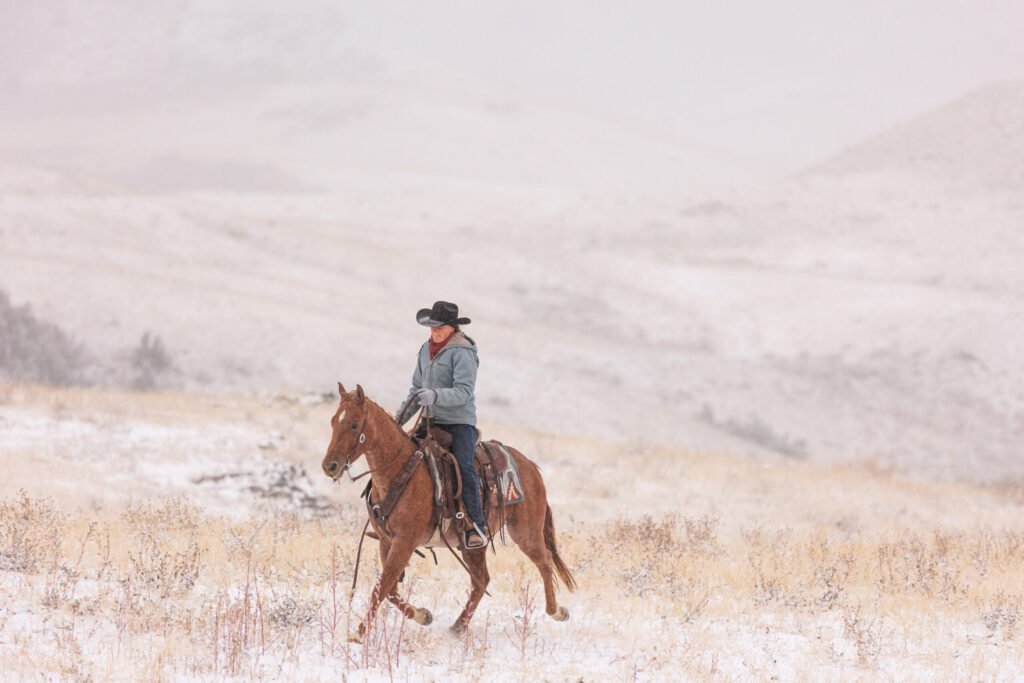If you’re planning on riding during the winter, it’s important to take precautions to stay warm and healthy, especially in cold weather. Frostbite and hypothermia can occur even at temperatures as high as 40 degrees Fahrenheit, and wind chill from riding at a trot or lope/canter can make it even worse.
If you start to feel numbness or waxy skin on your face or other exposed areas, such as hands or wrists, it’s crucial to stop and seek shelter. Check on your riding buddies regularly for signs of frostbite, like white or yellowish spots on their faces. Avoid wearing metal jewelry or accessories next to your skin, as they can freeze and increase the risk of frostbite.

Here are 5 other tips to mitigate cold weather risks:
- Dress Appropriately: Layer up with warm clothing and opt for moisture-wicking materials to stay dry. Avoid tight clothing that restricts circulation and don’t forget to protect your extremities with insulated gloves, hats, and warm socks.
- Protect Your Horse’s Extremities: Make sure your horse’s legs are well-insulated with leg wraps or boots to prevent frostbite. Consider using snow pads for shod horses to prevent snow and ice buildup.
- Limit Exposure to Cold and Wet Conditions: It’s best to avoid riding in extreme weather, especially when it’s windy, rainy, and cold. If the weather is severe, consider rescheduling your ride or finding an indoor alternative.
- Regularly Check for Signs of Frostbite: Conduct daily inspections of your extremities, looking for any redness, swelling, or discoloration that could indicate frostbite.
- Provide Shelter and Protection: Ensure your horse has access to suitable shelter during breaks or when not in use to protect them from harsh weather conditions and reduce the risk of frostbite.
[Horse Soundness Do’s and Don’ts]

